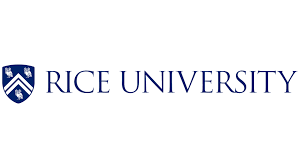8 University-Led Summer Research Programs for High School Students in Texas
If you’re a high schooler looking for a productive way to spend the summer, consider participating in research programs for high school students! Many university‑led summer research programs in Texas give you hands‑on exposure to STEM fields without a hefty price tag. They give you the opportunity to apply classroom theories to real‑world problems; build practical skills in data analysis, experimental design, and computational modeling; and connect you with faculty mentors and peers who share your interests.
University research programs for high school students often include access to campus labs, professional development workshops, and networking events, all of which strengthen your college readiness and broaden your career outlook. If you’re in Texas or looking for a virtual option, and you’re eager to explore fields like engineering, computer science, biotechnology, or environmental science, read on for our top eight research programs for high school students.
1. Anson L. Clark Scholars Program at Texas Tech University
Location: Texas Tech University campus, Lubbock, TX
Cost/Stipend: No cost; $750 stipend
Application Deadline: February 24
Program Dates: June 22 – August 7
Eligibility: High school juniors and seniors; must be at least 17 when the program begins
As one of the top research programs for high school students, the Anson L. Clark Scholars Program at Texas Tech University is a seven‑week, residential summer research experience for high school juniors and seniors. You’ll collaborate one‑on‑one with faculty mentors across disciplines from neurobiology and engineering to history and marketing, developing hands‑on skills in experimental design, laboratory techniques, data analysis, and critical problem‑solving.
Only 12 students are selected each year, making this a highly competitive opportunity. As a participant, you’ll attend weekly seminars and site visits to research labs and industry partners, where you’ll engage directly with professionals and observe real‑world applications of your work. The program culminates in a formal research symposium, allowing you to present your findings and build a portfolio that strengthens your college and career trajectory.
2. NASA and UT Austin’s SEES High School Summer Intern Program
Location: University of Texas, Austin, TX
Cost/Stipend: None
Application Deadline: February 22
Program Dates: May – July
Eligibility: U.S. high school sophomores and juniors; 16+ and interested in STEM
In partnership with NASA, UT Austin offers a seven-week summer research internship for high school students called the STEM Enhancement in Earth Science (SEES) Program. You’ll start with virtual modules on Earth science fundamentals and Python programming, then convene on the UT Austin campus in July for hands‑on research. Working alongside NASA scientists and engineers, you’ll analyze satellite data, model ice‑sheet dynamics, monitor Earth’s gravity field, and explore planetary science applications.
Only 215 students were selected from over 2,000 applicants in 2024, highlighting the program’s competitiveness. The experience culminates in a virtual SEES Science Symposium, where you present your findings to peers and professionals. Throughout this program, you will learn data analysis, remote sensing, and problem-solving skills that will provide a solid foundation for developing your STEM research skills in the future.
3. University of Houston’s Mohan Lab Summer Internship
Location: Mohan Lab, University of Houston, Houston, TX
Cost: Free; stipend not provided
Application Deadline: March 28
Program Dates: June 2 – July 25
Eligibility: Rising high school seniors
For rising high school seniors studying biomedical or health science careers, the Mohan Lab Summer Internship offers hands-on, eight-week research programs for high school students. You’ll begin with 1-2 weeks of intensive training in core lab techniques, such as sterile cell culture and basic molecular assays, before embarking on independent projects under the guidance of Dr. Chandra Mohan, graduate students, and lab staff.
Over the following six weeks, you’ll investigate topics like protein biomarkers in bladder cancer or RNA profiling in kidney disease, using instrumentation such as ELISA readers, qPCR machines, and fluorescence microscopes. At the end of the program, you’ll present your findings at the Mohan Lab joint laboratory meeting. You might even get the chance to contribute to research publications or participate in continued collaboration beyond the internship period.
4. Digital Health Summer Program at Rice University
Location: Rice University, Houston, TX
Cost: Free
Application Deadline: April 4
Program Dates: June 9 – 26
Eligibility: Houston high school sophomores and juniors
The Digital Health Summer Program at Rice University is a three‑week, fully funded internship for Houston‑area 10th and 11th-grade students. You’ll begin with foundational workshops on digital circuitry, physics, and programming, then spend hands‑on lab time designing and prototyping a healthcare device, working with pulse oximeters, GPS units, and accelerometers under faculty and graduate student mentorship.
No cost to participants ensures accessibility for students from underserved communities. Alongside technical training, you’ll develop scientific writing and presentation skills, collaborate in small cohorts, and explore STEM career pathways through panel discussions and campus tours. The program concludes with a design challenge and pitch session before a panel of judges, giving you a platform to showcase your solution and build a professional network.
5. UT Austin's Summer High School Research Academy (HSRA)
Location: University of Texas at Austin, TX
Cost: $3,500. Need-based scholarships and stipends available
Application Deadline: March 23
Program Dates: June 9 – July 16
Eligibility: Rising high school sophomores, juniors, and seniors; Minimum age of 15; Preference given to rising juniors and seniors in Texas
The HSRA at the University of Texas at Austin offers five‑week research programs for high school students looking for an immersive experience. As a participant, you will be involved in hands‑on, interdisciplinary science projects on campus. You’ll join active College of Natural Sciences laboratories to conduct experiments in fields such as biochemistry, genetics, environmental science, neuroscience, genome engineering, data analytics, and ecology.
Through close mentorship by UT faculty and undergraduate researchers, you’ll develop practical laboratory skills, data‑analysis techniques, and scientific problem‑solving abilities. Weekly seminars and lab tours connect you with professionals and showcase real‑world applications of research. The program culminates in a formal poster presentation, where you’ll share your findings with peers and mentors.
6. Stanford’s Artificial Intelligence in Medicine and Imaging (AIMI) Summer Research Internship
Location: Remote
Cost/Stipend: Application fee is $40; Participation fee is $850; Need-based financial aid is available
Application Deadline: February 21
Program Dates: June 16 – 27
Eligibility: U.S. high school students over 14; Must have strong math or computer programming skills or experience with a healthcare project
The Stanford AIMI Summer Research Internship offers two‑week virtual research programs for high school students that introduce you to AI applications in healthcare through lectures, mentoring, and collaborative projects. As a participant, you’ll attend daily technical sessions covering machine learning fundamentals and specific medical imaging use cases. Alongside Stanford Student Leads and researchers, you’ll participate in hands‑on group work to develop AI solutions for clinical questions.
The program includes Virtual Career Lunch and Learns with guest speakers from academia, industry, non‑profits, and government, plus social activities to build your peer network. Upon completion, you receive a Certificate of Completion, and high‑performing participants may be invited to an extended research opportunity.
7. Air Force Research Laboratory (AFRL) Scholars Program
Location: Several locations across the United States. Students in Texas can choose the AFWERX site in Texas
Cost/Stipend: No cost; Stipend of $501.60/week
Application Deadline: January 10
Program Dates: 8-14 weeks in the summer
Eligibility: High school students who are at least 16; Check the detailed eligibility criteria here
The AFRL Scholars program is a summer internship for high school students interested in aerospace engineering and STEM research. You’ll choose up to three topics per AFRL location, such as machine learning, atomic physics, satellite navigation, or astrodynamics, and engage in hands‑on research under the guidance of full‑time AFRL scientists and engineers.
As an intern, you’ll tour AFRL labs to see cutting‑edge facilities and equipment in action. Past projects have included launch vehicle systems design and modeling rotating detonation rocket engines, giving you real experience in problem formulation, simulation, and data analysis. Throughout the program, you’ll refine your technical skills and collaborate with professionals in a well‑equipped aviation research environment.
8. ELITE Tech Camp
Location: Rice University, Houston, TX
Cost/Stipend: Residential Camp Tuition: $3,795 | Commuter Camp Tuition: $1,695
Program Dates: Multiple sessions available from June 22 – July 26
Application Deadline: June 15 (tentative, based on last year's program)
Eligibility: U.S. high school students
The Rice ELITE Tech Camp is a one‑week, residential summer program at Rice University that offers immersive research programs for high school students interested in learning about advanced engineering and technology concepts. As a participant, you’ll engage in hands‑on modules covering topics like AI, machine learning, IoT, data analytics, 3D modeling/printing, and bioengineering. You’ll also get to apply the engineering design process to real‑world challenges.
You’ll work in small teams under the guidance of Rice faculty and industry professionals, developing technical skills in programming with Python, CAD design, and hardware prototyping. The program also includes daily engineering leadership activities and college‑readiness workshops, helping you refine project management and communication abilities. You’ll live in Rice residence halls, network with peers, and tour campus labs to build familiarity with university resources. At the end of the session, you’ll showcase your prototype and design process in a final presentation, demonstrating both technical proficiency and leadership growth.
Are you looking to start a project or research paper in the field of AI and ML? Consider applying to Veritas AI!
Veritas AI is an AI program designed for high schoolers. It’s founded and run by Harvard graduate students. The program aims to give students the opportunity to create unique projects in the field of AI. Participants will get to learn more about AI from researchers and experts and work 1-on-1 with mentors from Harvard, MIT, Stanford, and more. In just the past year, we’ve had over a thousand students learn with us! You too can apply!
Image Source - Rice University Logo

